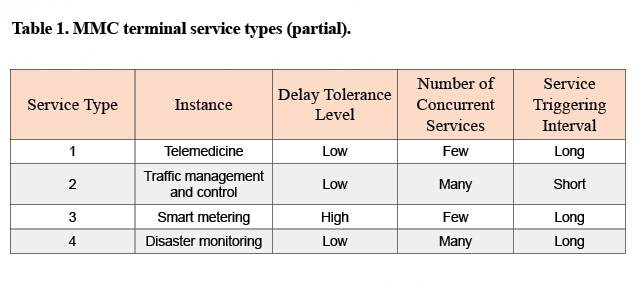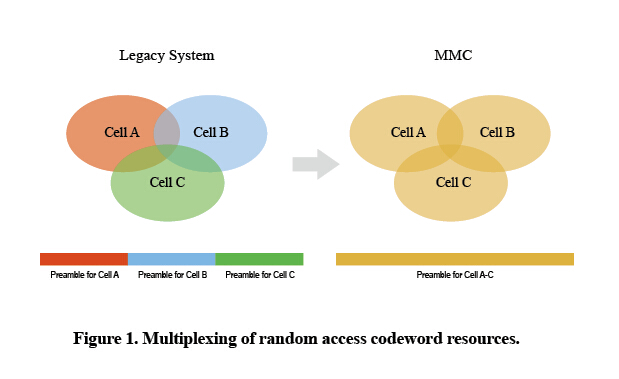Outlook for IoT Communications in the 5G Era
In the 5G era, with the popularity of e-banking, e-learning, e-health, the development of network society will create a surge in mobile and wireless traffic. It is estimated that by 2020, data traffic will grow 1000 times compared to 2010.
In the 4G era, five billion items are connected worldwide. In the 5G era, 100 billion massive wireless connections involving the vast majority of consumer products, industrial products and logistics will be established. What’s more, 5G Internet of Things (IoT) cloud will integrate cloud computing and big data technologies to build an intelligent society.
The main applications of IoT include intelligent industry, intelligent agriculture, intelligent transportation, smart grid, smart home, smart city, and Internet of Vehicles. Therefore, the basic needs of machine communications for 5G networks are massive terminal access, ultra-low delay, efficient connectivity, low cost, low power consumption, ultra-high reliability, and full geographic coverage.
MMC Architecture
The massive machine communication (MMC) network structure includes terminal-side, access side, core network side, and service side network layers. Technology upgrades or innovative technology needs to support all network layers. At the terminal layer, device-to-device (D2D) technology is used for multi-hop access networks or for transmitting data directly between terminals to optimize network resources and cover the entire network. Networks can also be built at the terminal layer and can be connected to 5G networks through IoT terminal gateways. At the access side, small-cell access, ultra-dense network (UDN) access, service gateway, downwards movement of the forwarding plane and multi-RAT collaboration technologies guarantee ultra-low-delay transmission and massive terminal access. At the core network side, NFV and SDN technologies make all network functions and applications operate as virtual machines and schedules network resources dynamically. Moreover, a unified control plane is used for centralized control. At the forwarding plane, data flow can be forwarded according to the flow meter, and service applications can be provided through service chains.
Massive Terminal Access Technology
The 5G era will witness both rapid evolution of machine-to-machine (M2M) communication and explosive growth of terminals connected to 5G networks. It is imperative to improve the terminal access mechanism. On the one hand, improving access capacity to connect massive terminals and provide high-bandwidth traffic guarantees user experience and satisfaction. On the other, machine terminals have various requirements, such as services (including video, voice and data flow), priorities, mobility and real time. Therefore, differentiated wireless resource control and mobility management are needed to maximize the use of network resources.
PRACH Preamble Enhancement
The MMC system should satisfy the access demand of massive terminals first. The random access scheme in existing LTE systems derives from Slotted-ALOHA. If it is used in an MMC system, more random access resources (time, frequency, and codes) can be allocated to MMC terminals. However, the allocation of many time-frequency resources to random access channels limits the bandwidth for terminal service transmission, which affects user experience and system spectral efficiency.
Because most MMC terminals support only one or a few service types, different access channels can be divided according to the service types supported by MMC terminals to reasonably allocate channel resources and optimize spectrum use (Table 1).

MMC services have different requirements for time delay in access networks. When many MMC terminals are simultaneously connected, it supposed to allocate different access resources in a time domain to MMC terminals. MMC services that have low delay tolerance can use the nearest access resources, and those that have high delay tolerance use further access resources. This ensures better access resources utilization and user experience.
The random-access scheme in existing LTE systems assigns random access codewords from orthogonal Zadoff-Chu sequences to terminals. However, due to the impact of multi-path delay and Doppler frequency domain on channels, it can be detected on the receiver side that random access codewords are not completely orthogonal but have mutual interference, which becomes higher and more obvious when more terminals initiate random access requests. In addition, this interference is affected by the transmit power of terminals. Therefore, an interference-cancellation technology, such as successive interference cancellation (SIC), needs to be introduced to eliminate interference and increase the number of multiplexed MMC terminals.
Random access codeword resources available in a cell can be allocated flexibly according to MMC network load, and multiple cells can share their random access codeword resources with each other (Fig. 1). Cell A, Cell B, and Cell C on an MMC Network can use three times more codeword resources than those on traditional networks, which further reduces the access delay caused by the collision of codewords. From above, a multi-cell cooperation mechanism should be established for random access codeword resources.

Control Plane Consumption Optimization
Massive connected terminals bring not only tremendous pressure on access resources but also capacity bottlenecks of service sharing channels that are used for data transmission. The bandwidth and throughput always fail to keep up with the meteoric growth of services and traffic.
4G LTE systems should guarantee the mobility of human-to-human (H2H) communication users and scheduling flexibility, the control channels may occupy up to 20% of the total data bandwidth, which is quite large. Therefore, an important research direction in the 5G era is to reduce the consumption on the control plane and expand data transmission pipes. The scheduling consumption of downlink control channels and consumption of uplink control channels can be reduced, and air interface signaling and signaling on the ground side can be simplified.
Generally, each downlink resource scheduling instruction dispatches a single-user transmission. The cost is acceptable if data traffic transmitted at one time is very large. However, the cost effectiveness of many MMC services is too low because of low data traffic transmitted each time. The following methods can be used to enhance the efficiency of scheduling instructions by allowing a single instruction to have greater scheduling capacity.
● Multi-user scheduling: An instruction is used for scheduling a single transmission of multiple users.
● Integrated scheduling of multiple data packets: Multiple data packets are integrated and transmitted rapidly, reducing scheduling instructions and resource fragments.
Most MMC services do not transmit data frequently. After MMC terminals have been connected to networks, the current 4G LTE networks need to maintain a set of uplink control channels for each user to ensure that users can always quickly apply for uplink transmission resources from the network side. H2H users use uplink control channels frequently whereas MMC users barely use those channels. To increase the utilization of uplink control channels for MMC users, multiple users can share uplink control channels through time-division multiplexing (TDM). If a user does not need to upload data, the uplink control channels can be temporarily used by others.
MMC users require lower mobility than H2H users. The focus of research on MMC services in the 5G era is simplify signaling processes because most MMC terminals are fixed at certain positions. With the large terminal cardinality, even slight signaling simplification saves enormous bandwidth resources. In addition, MMC terminals in fixed positions do not need to repeat uplink synchronization procedures and therefore signaling related to uplink synchronization in conventional 4G random access procedures can be simplified.
Ultra Real Time Technology
Delay is a key factor that affects end user experience. In the current LTE Release 8 networks, the typical round-trip time (RTT) for internet access between end users and servers is 30–60 ms (10–20 ms in an ideal laboratory environment). To meet the application requirements of intelligent industry, intelligent transportation, smart grid, and smart healthcare, super-real-time communications with a delay of 1 ms has been proposed. It is one of the challenges facing next-generation wireless communications.
Ultra-Real-Time Frame Structure
In A 5G Wireless Communication Vision, TU Dresden proposed the decomposition of an ultra-low time delay of 1 ms in 5G systems, with only 200 us used for baseband modem and air interface processing. In order to achieve a delay of only 1 ms under the frame structure of the existing communication systems, the modules at the top and physical layers on both the sender and receiver sides should be optimized.
In an LTE system, if the transmission time interval is 1 ms, the corresponding RTT is about 8 ms. In a 5G system, the RTT should be less than 200 us to reach the delay of 1 ms. Assuming the capacity of transmitters and receivers can be comparable to that in the existing LTE system, the air interface transmission time interval in the 5G system should not exceed 25 us.
Scheduling Optimization
To transmit uplink data in an existing LTE system, a UE should send a scheduling request first. The base station receives the scheduling request and transmits scheduling information to the UE. After receiving the scheduling information, the UE transmits data through related resources according to the instruction. To reduce the scheduling request delay and scheduling delay for uplink data, self-scheduling is recommended. That is, some resources are allocated in advance. The UE can transmit data directly through pre-allocated resources without sending scheduling requests or waiting for scheduling by the base station. By doing so, the time delay can be reduced to increase data transmission efficiency.
The UE’s demand for data transmission is dynamic; some of the pre-allocated resources may idle, resulting in decreased system spectral efficiency. In this case, code-division multiplexing (CDM) allows multiple users to reuse the same time-frequency resources to maximize resource utilization.
Efficient Connection Technology
Large-scale machine terminals are using 3G or 4G communications. The frequent transmitting of small data packet by machine terminals leads to frequent access control signaling between RAN and CN. Accordingly, the ratio of control signaling traffic to total traffic increases, and transmission efficiency is reduced.
An efficient connection design for 5G systems can satisfy the needs of MMC small data. Improving the transmission efficiency of small data packet is a way to achieve efficient connection. If common air interface technology is used to transmit small data packets, air interface resources are wasted. 5G systems require a more efficient air interface design where the granularity of the air interface resource scheduling can be adjusted according to the features of small data packets. The concept of integrated scheduling of multiple packets mentioned above can be used to improve resource utilization efficiency.
To improve the air interface efficiency in 5G networks, new air interface technology can be used to optimize bandwidth design, achieve the interaction of small data signaling and transmit small data packets. In addition, the existing bands can be shared. Some 4G frequency can be allocated to transmit MMC signaling and small data packets. FDM/TDM technology and the overload system technology can be used in 3GPP networks and 3GPP2 networks, respectively.
As for improving the signaling efficiency, signaling interaction between the RAN and CN should be reduced when terminals frequently transmit small data packets to shorten end-to-end transmission delay. The access control function of MME can be moved downwards to the RAN side. In the case of frequent access of terminals, the RAN can implement access control and allocate wireless resources without access control signaling interaction with the control plane NEs on the CN. It also can interact with the user plane NEs to implement bearer establishment and transmit small data packets. On the user plane, the forwarding plane can also be moved downwards to the RAN side, and data interaction with application platforms can be implemented directly through forwarding plane.
5G will open a new era of IoT―a new-generation network system based on the internet. New-generation 5G networks will provide wireless connection for diversified network devices, handle all networking information at an extremely high speed, and achieve efficient, convenient and secure information transmission and sharing.